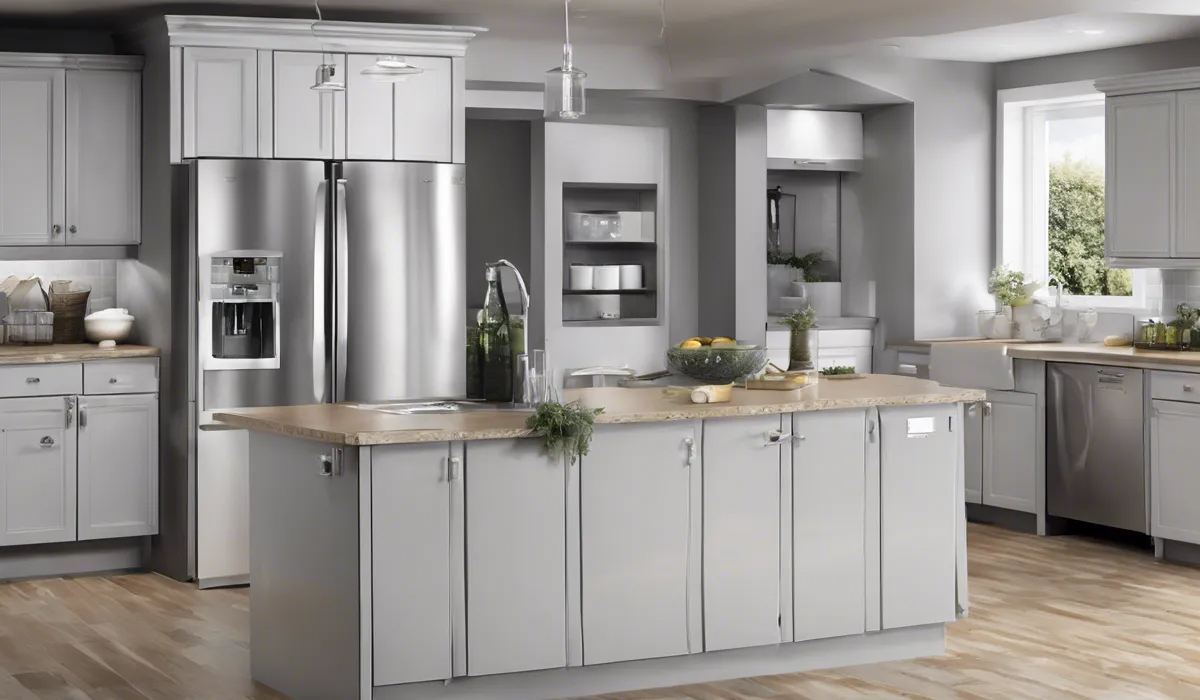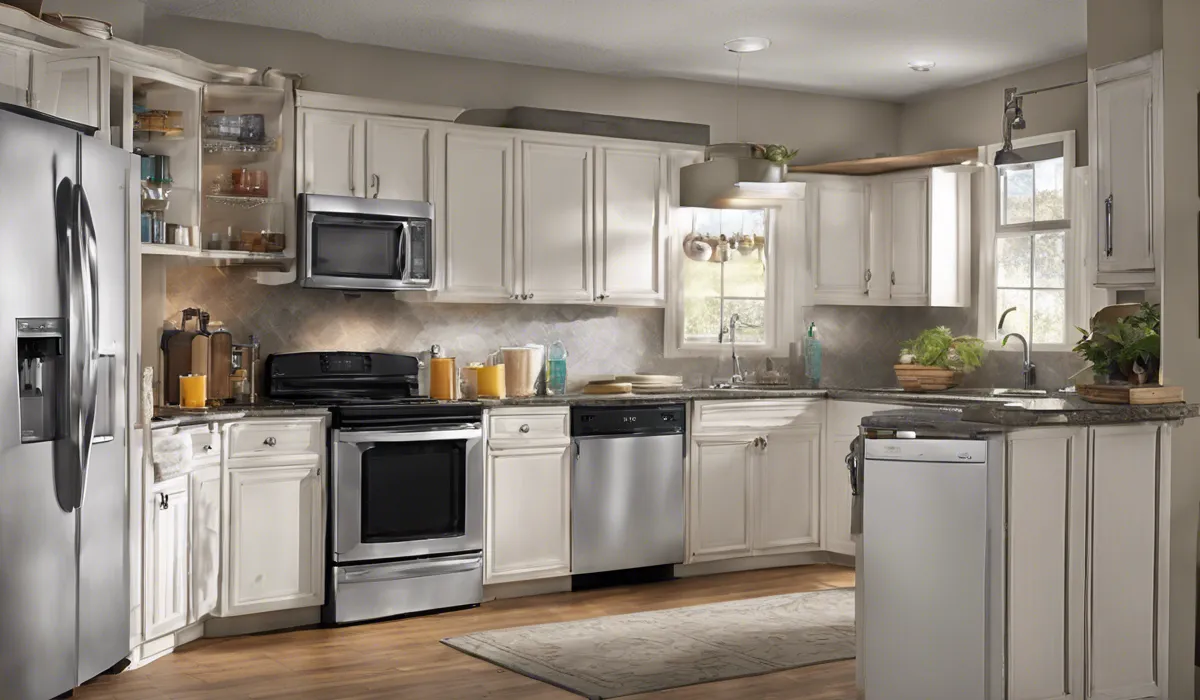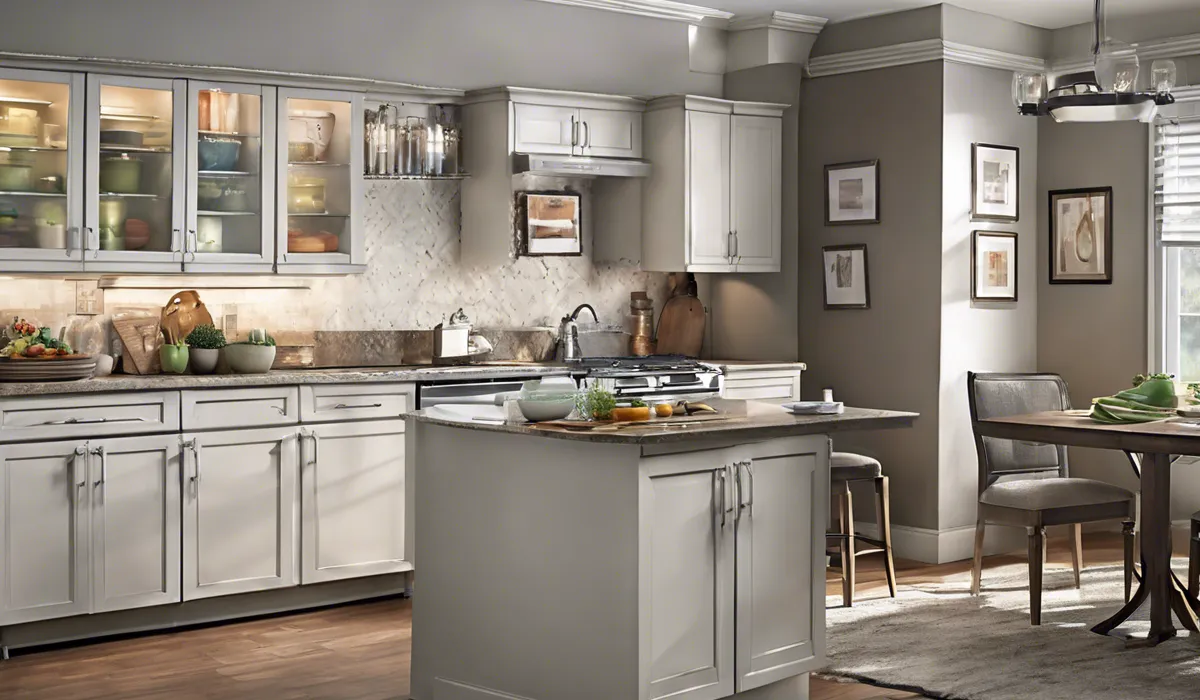Can a Fridge and Dishwasher Be on the Same Circuit? Risks & Rules!
Generally, a fridge and dishwasher should not be on the same circuit. They require individual circuits due to high power consumption. The National Electrical Code typically mandates separate circuits for major appliances to prevent overloading and ensure safety.
Electrical Requirements and Safety Regulations

Overview of the National Electrical Code (NEC) Regarding Kitchen Appliances
The National Electrical Code (NEC) sets the standard for electrical safety in residential, commercial, and industrial occupancies.
When it comes to kitchen appliances, the NEC requires specific guidelines to be followed to ensure safety and prevent electrical hazards.
Each major appliance must have a dedicated circuit to handle its electrical load without causing overloads or electrical fires.
This rule underscores the importance of understanding and adhering to NEC regulations when installing kitchen appliances such as refrigerators and dishwashers.
Explanation of What a Circuit Is and How It Functions
An electrical circuit is a path that allows electricity to flow from the power source, through a load, and back to the source. This flow is controlled and protected by a circuit breaker or fuse, which cuts off electricity in case of an overload.
Circuits are designed to handle a certain amount of electric current, measured in amperes, and exceeding this can lead to overheating and potential fire hazards.
Importance of Individual Circuits for High-Power Appliances
High-power appliances such as refrigerators and dishwashers draw significant amounts of electricity, especially when they start up. To prevent overloading, the NEC advises that each of these appliances should be on its own individual circuit.
This ensures that the electrical load is properly managed, and the risk of tripping a breaker or causing an electrical mishap is minimized.
Potential Safety Risks of Overloading a Single Circuit
Overloading a circuit by plugging in too many appliances can lead to overheating, which can damage the insulation on wires and pose a serious fire risk.
Such a scenario not only endangers your home but can also shorten the lifespan of your appliances due to inconsistent power delivery and potential voltage drops.
Technical Considerations for Combining Appliances on One Circuit

Power Consumption of the Average Refrigerator and Dishwasher
The typical refrigerator can consume between 100 to 800 watts, while a dishwasher might use 1200 to 1500 watts.
However, the initial startup surge for these appliances can be significantly higher, which needs to be accounted for when considering circuit capacity.
This high power consumption is a primary reason why combining these appliances on one circuit is generally not recommended.
Calculating Total Load Capacity of a Typical Home Circuit
A standard home circuit is typically rated for 15 to 20 amperes. This translates to a maximum load capacity of 1800 to 2400 watts at 120 volts for a 15-amp circuit and 2400 to 3200 watts for a 20-amp circuit.
When calculating the load, it’s crucial to consider both the running and startup wattage of appliances to avoid overloading the circuit.
Factors Affecting the Decision to Combine or Separate Circuits
Key factors in the decision-making process include the wattage of the appliances and the startup surge current they draw.
If the combined load of the refrigerator and dishwasher approaches or exceeds the circuit’s capacity, they should be on separate circuits. Additionally, local building codes and the NEC’s evolving standards must be considered to ensure compliance and safety.
Implications for Energy Efficiency and Electrical System Strain
When appliances share a circuit, the electrical system can be strained, reducing efficiency and potentially leading to voltage drops.
This can cause appliances to work harder, use more energy, and wear out sooner. Proper circuit management ensures that each appliance receives a stable power supply, optimizing their performance and energy consumption.
Best Practices for Electrical Circuit Management in Kitchens

Pros and Cons of Having a Fridge and Dishwasher on the Same Circuit
While it might save on immediate installation costs, the cons of having both a refrigerator and a dishwasher on the same circuit are significant.
These include increased risk of overloading, potential safety hazards, and less efficient appliance operation. The benefits of separate circuits far outweigh the convenience of combining them, as they provide a safer and more reliable electrical infrastructure for your kitchen.
Recommendations from Appliance Manufacturers and Electricians
Appliance manufacturers and professional electricians generally recommend that each major appliance has its own dedicated circuit.
This not only aligns with the NEC but also with the best practices for preserving the longevity and efficiency of the appliances. Following these recommendations can prevent unnecessary service calls and ensure that your kitchen runs smoothly.
Alternative Circuit Layouts for Optimal Kitchen Appliance Performance
For optimal performance, electricians may suggest separate circuits for each major appliance and additional circuits for countertop outlets.
These layouts can accommodate the use of smaller kitchen appliances like toasters, blenders, or coffee makers. This approach ensures that the power needs of every kitchen component are met without compromising safety and efficiency.
Tips for Consulting with a Professional Electrician for Kitchen Electrical Planning
Consulting with a licensed electrician is crucial when planning kitchen electrical layouts.
An electrician can provide valuable insights into the specific electrical needs of your kitchen and ensure that the installation complies with all relevant codes and standards.
They can also advise on future-proofing your electrical system, considering potential renovations or new appliance additions.
FAQs About Electrical Circuits for Appliances
Can a fridge and a dishwasher be on the same electrical circuit?
Generally, a fridge and a dishwasher should not be on the same circuit as they both require individual circuits due to their high power consumption.
What does the National Electrical Code say about fridges and dishwashers on the same circuit?
The National Electrical Code typically requires separate circuits for major appliances like fridges and dishwashers to prevent overloading and enhance safety.
Why should a fridge have its own dedicated circuit?
A fridge should have its own dedicated circuit because it is a high-powered appliance that can cause circuit overloads if shared with other devices.
Can overloading a circuit with multiple appliances cause issues?
Yes, overloading a circuit with multiple appliances can lead to tripped breakers, potential fire hazards, and reduced performance of the appliances.
Is it safe to plug a dishwasher and a fridge into the same outlet?
No, it is not safe to plug a dishwasher and a fridge into the same outlet as it risks overloading the circuit and is against safety regulations.
Final Thoughts
Major appliances such as fridges and dishwashers demand individual circuits due to their high power consumption.
Adhering to the National Electrical Code, separate circuits are typically required to avert circuit overloading and uphold electrical safety. Thus, pairing a fridge and dishwasher on the same circuit is generally not advisable.





